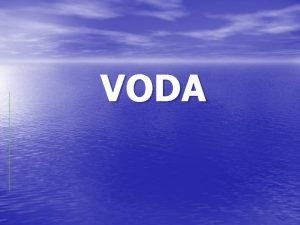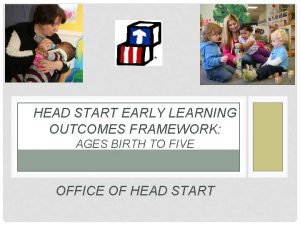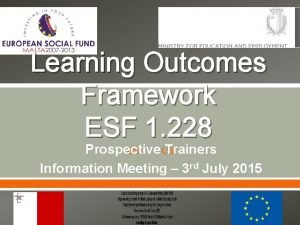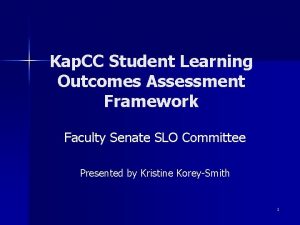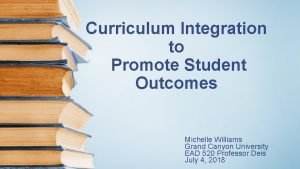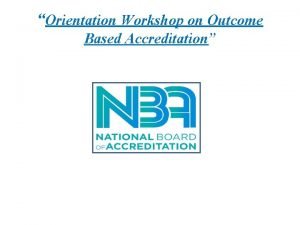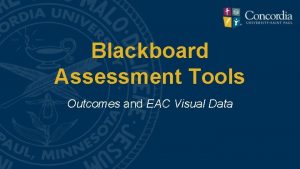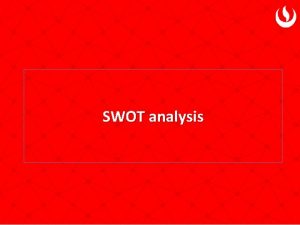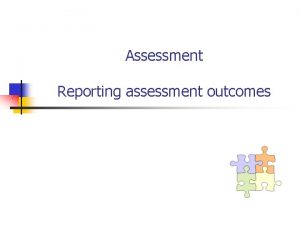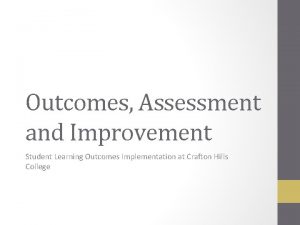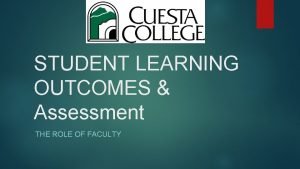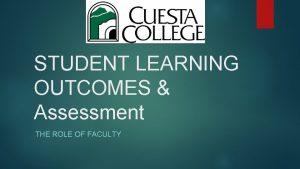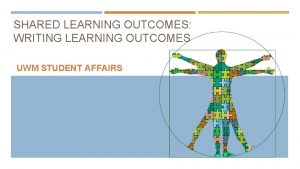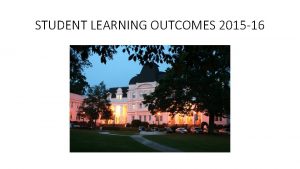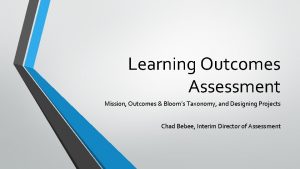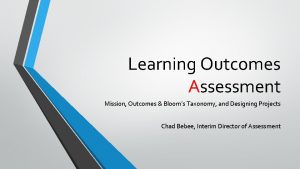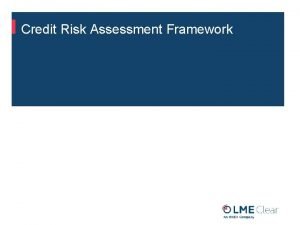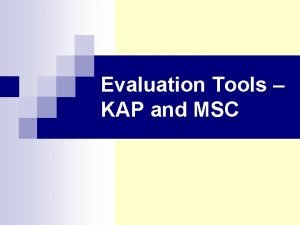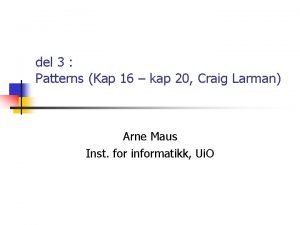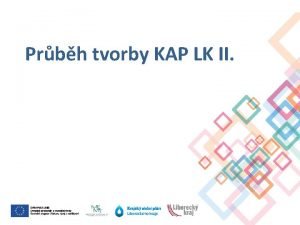Kap CC Student Learning Outcomes Assessment Framework Faculty

















- Slides: 17

Kap. CC Student Learning Outcomes Assessment Framework Faculty Senate SLO Committee Presented by Kristine Korey-Smith 1

KAP CC Definition of SLOs n Student Learning Outcomes address the level of ability to synthesize knowledge, skills, and attitudes that a student has attained by the end of his or her unit of academic study for purposeful and effective application beyond that unit of academic study (i. e. in his or her role as student, worker, family and community member, and/or life-long learner). 2

4 -Step Assessment Cycle Gather Evidence Interpret Evidence Identify Outcomes Implement Change 3 Maki, 2004

Student Learning Outcomes n n n Gen Ed Outcomes – cross curricular SLOs that twoyear college graduates should possess to succeed in work, transfer education, and life. Program Degree and Certificate SLOs – program specific outcomes that two-year college graduates should possess to succeed in work. Course Competencies/SLOs – measurable skills and/or knowledge that students possess at the end of a course. Several competencies may constitute a broader outcome at the program and general education levels. 4

Overview of Gen. Ed. SLO Assessment Plan Courses designed to address one or more SLOs at a specific level Collect Evidence of learning: • Samples of student work from courses • Develop instruments Gen Ed Data Analysis: Make summative judgments about student learning relative to SLO. Recommend improvements. Record results in report. Tied to tactical planning and allocation of resources Interdisciplinary Committees Create alignment grids to determine what courses address what SLO Draft SLOs Develop benchmarks and rubrics Implement recommended changes – SLO, rubric, support, instruction, resources, policies Results in improved institutional quality 5

Levels of Opportunities n Preparatory Level: Develops the capacity for students to pursue pathway related studies. n Level 1: SLO will be addressed at a introductory, basic level with beginning comprehension and familiarity, limited application. n Level 2: SLO will be integrated regularly into classroom activities to develop the skill. Students will be able to apply this competency in a familiar setting. 6

Addendum to Curriculum Documents SLO n n What SLO(s) does the course address? What level does the course address the SLO? Assessment Tools/Activities n What assessment tools and/or activities are used to help students to attain the identified SLO(s) that the course addresses? 7

Determine alignment of learning outcomes at different levels Gen ED Students Learning Outcomes (SLO) COURSE SLO #1 Phil 101 1 Phil 102 2 Art 201 2 SLO #3 SLO #4 SLO #5 1 1 2 8

Overview of Program SLO Assessment Plan Courses and/or capstone designed to address one or more SLOs Collect Evidence of learning: • Samples of student work from courses • Develop instruments Program Data Analysis: Make summative judgments about student learning relative to SLO. Recommend improvements. Record results in program review. Tied to tactical planning and allocation of resources Faculty Draft SLOs Develop benchmarks and rubrics Program maps show courses culminate in intended SLOs Implement recommended changes – SLO, rubric, support, instruction, resources, policies Results in improved 9 institutional quality

Levels of Opportunities n Preparatory Level: Develops the capacity for students to pursue pathway related studies. n Level 1: SLO will be addressed at a introductory, basic level with beginning comprehension and familiarity, limited application n Level 2: SLO will be integrated regularly into classroom activities to develop the skill. Students will be able to apply this competency in a familiar setting. n Level 3: Development of this SLO is threaded into daily classroom activities and assignments. Students will be able to independently apply SLO to new and unfamiliar situations. 10

C I T Y CO PROGRAM C O U R S E INTRO C O N N E CON S E Q U E N C E T I O N C T I O N INTEGRATING EXPERIENCE CO N N E CT IO N PROGRAM C O THEME L L EG N N E C ON T I C O M M U N L E G E O U T C O M E S C A P S T O N E PROGRAM CLUSTER E C L N C E N T R Y N E C O L L U E G E M O M I T O L L E G E Y 11

Addendum to Curriculum Documents SLO n n What SLO(s) does the course address? What level does the course address the SLO? Assessment Tools/Activities n What assessment tools and/or activities are used to help students to attain the identified SLO(s) that the course addresses? 12

Overview of Assessment Plan for Administrative, Student Service, and Support Units Collect Evidence of Effectiveness: • Develop instruments • Use productivity information SOs relate to a unit’s function w/i the overall mission of the college Draft SO Develop benchmarks and rubrics Unit Committees Data Analysis: Make summative judgments about the effectiveness of the unit relative to the SO. Recommend improvements. Record results in program review. Implement recommended changes – SO, ways of doing, support, resources, policies, infrastructure Tied to tactical planning and allocation of resources Results in improved institutional quality 13

Academic, Administrative, Student Services and Support Units Gen and Program SLOs All activities at this level offer students direct opportunities to achieve the SLOs All activities and services support students’ work in their courses, OLAs and LAPs by providing training for faculty and by maintaining such learning support infrastructures as the library resource collections. All activities and services at this level support student in their adaptation to functioning as a successful member of a college. All work and resources at KCC ultimately support students’ attainment of SLOs All activities at this level directly support students’ work in their courses and OLAs Services and activities support student as they transition to college All activities and services support student’s practical needs in becoming members and maintaining membership in college. All activities and services support students and faculty members’ work through provision of functioning physical plant, equipment, 14 and other basic resources

Contributors to Teaching and Learning and the Attainment of Gen Ed and Program SLOs 15

References Accrediting Commission for Community and Junior Colleges. (2007, August). Guide to Evaluating Institutions. Retrieved on 10/01/07 from http: //www. accjc. org/ Aleen, M. J. (2006). Assessing general education programs. Bolton, MA: Anker Publishing Company, Inc. Beno, B. A. (2004). The role of student learning outcomes in accreditation quality review. In T. W. Banta (Ed. ), Community college assessment. San Francisco, CA: Jossey-Bass. Maki, P. L. (2004). Assessing for learning: Building a sustainable commitment across the institution. Sterling, VA: American Association for Higher Education. Miles, C. L. & Wilson, C. (2004). Learning outcomes for the twenty-first century: Cultivating student success for college and the knowledge economy. In T. W. Banta (Ed. ), Community college assessment. San Francisco, CA: Jossey-Bass. 16

References O’Banion, T. (1997). A learning college for the 21 st century. Phoenix, Arizona: American Council on Education and The Oryx Press. Scott, A. G. (2007). The role of assessment in linking faculty teaching to student outcomes. In T. W. Banta (Ed. ), Assessing student achievement in general education. San Francisco, CA: Jossey-Bass. Serban, A. M. & Friedlander, J. (2004). Developing and implementing assessment of student leaning outcomes. Hoboken, NJ: Wiley Periodicals. Walvoord, B. E. (2004). Assessment clear and simple. San Francisco: CA: Jossey-Bass. 17
 Kap kap kape voda
Kap kap kape voda Expected outcome example
Expected outcome example Head start early learning outcomes framework
Head start early learning outcomes framework Learning outcomes framework
Learning outcomes framework What is ncbts
What is ncbts Ncbts and ppst comparison
Ncbts and ppst comparison Kap framework
Kap framework Sls learning singapore
Sls learning singapore Ead 520
Ead 520 Student faculty ratio for nba
Student faculty ratio for nba Blackboard outcomes assessment
Blackboard outcomes assessment Learning outcomes of water cycle
Learning outcomes of water cycle Lesson plan on notice writing
Lesson plan on notice writing Learning outcomes of swot analysis
Learning outcomes of swot analysis Objectives of rhymes
Objectives of rhymes Example of learning objectives
Example of learning objectives Photosynthesis takes place in the
Photosynthesis takes place in the Learning outcomes of nutrition in plants
Learning outcomes of nutrition in plants
